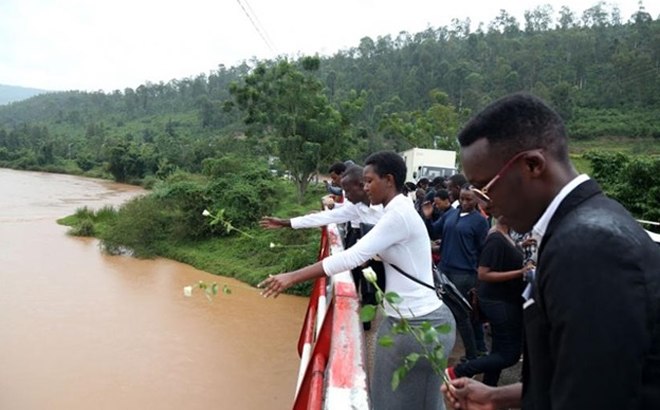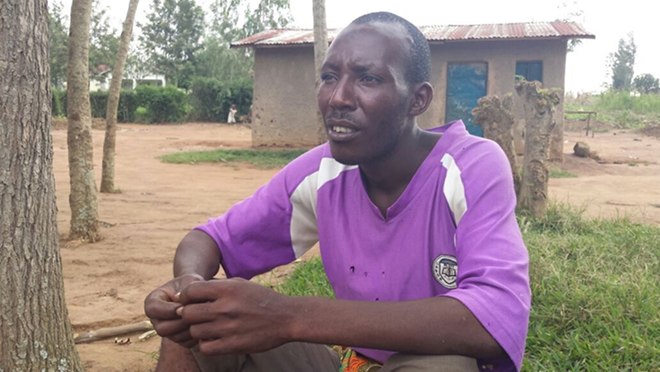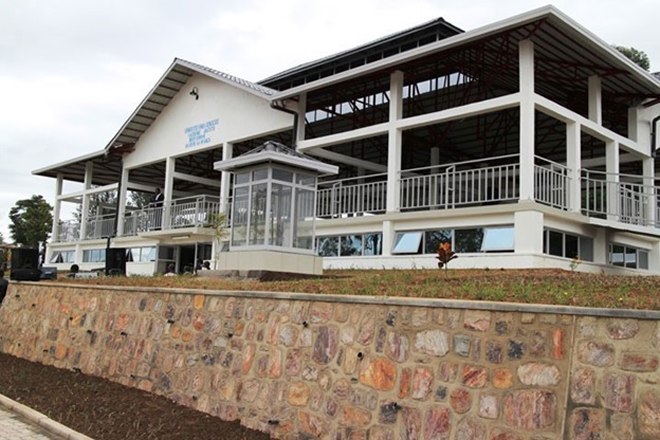In December 2015, Jean Damascène Ndayambaje 36, a genocide survivor from Busoro sector in Nyanza district, Southern Rwanda, relocated to Nyagatare district in the East.
He settled in Rutaraka cell on Gihorobwa hill where he farms to feed his family of three.
Little did he know that he had come to live just next to Jean Bosco Habimana, the man who allegedly killed his mother.
One evening, one of the neighbours informed Ndayambaje there were other people from his village who had come to settle in the area.
Ndayambaje says, my neighbour begun “telling me about other neighbours who relocated to my new area too…mentioning Jean Bosco Habimana who killed my mother.”
Habimana lived on another hill, twenty minutes away.
With the news of this neighbour from his village, Ndayambaja got chills all over the body, but kept calm.
That very evening, he was accompanied to visit Habimana; a father of seven in his 50s.
They introduced each other, of course mentioning all the other vital details, such as their families and neighbours back home.
The alleged killer pretended he was glad to meet Ndayambaje and welcomed the new village-mate in the area.
He asked his guests if he could offer a drink. He brought a soda. Ndayambaje was surprised he offered him a non-alcoholic drink yet this man was “a renowned drunkard” in the village.
As the sun set, Habimana convinced his guest to spend a night.
After hesitation, Ndayambaje accepted to stay, “because I had seen a lot; dying is not a problem to me anymore, but the objective was to find a way I could end up having him arrested.”
A night in hell
At night, the two men kept conversing. Habimana narrated how God blessed him with five more children after the genocide.
He also kept asking his guest, “How did Gacaca go in our village? Did they have anything against me?”
“No, you are clean,” Ndayambaje said to him.
Time to go to bed came. The family laid a mat in the living room for the guest.
“Memories of Habimana’s acts tormented me all night long,” said Ndayambaje.
He recalled how Interahamwe militias commanded by Habimana attacked the village. He remembered being hunted from their hideout with his mother.
He managed to escape, but his mother was killed.
“They threw my mother in a very deep septic tank. When I passed nearby the third day, she was still agonizing, crying for help to the merciless Interahamwe. I couldn’t do anything about it,” Ndayambaje recalls.
After the genocide, over 400 bodies were discovered in that same mass grave, according to Ndayambaje.
He also remembers Habimana leading two young Tutsi girls with a sword and heard him telling them he wanted to show them the way to escape into Burundi. He later killed them and threw them into the nearby Akanyaru River.

Mourners pay tribute to genocide victims who were thrown in Nyabarongo river
The disappointing release from prison
Thankfully, Ndayambaje managed to endure the long night until dawn.
He reported the case very quickly and Habimana was arrested in January 2016 and was detained at Busasamana police station in Nyanza.
“I reported to local leaders and the police, who asked me to bring evidences about the man,” Ndayambaje said.
Habimana’s arrest surprised many in Nyagatare, including genocide survivors who used to think he was just “a good man”.
“He was always showing compassion to survivors, building for the needy, visiting them every day, just to blind us,” says Emmanuel Twagirayezu, the President of Ibuka, the umbrella of the genocide survivors’ association in Nyagatare.
In total shock, last week, Ndayambaje saw the man who he believes killed his mother again wandering in the neighborhood.
“I almost fainted,” he said adding that, “I am feeling really insecure.” “I am afraid he will hurt me.”
Laetitia Niwemwiza, a representative of he National Commission against Genocide (CNLG) in Nyagatare and Gatsibo districts, says the suspect was paraded before residents in the neighborhood where he allegedly committed offenses, and witnesses testified in his favour.
One of the witnesses, she said, was a man who pleaded for his release. Niwemwiza learnt about a connivance in this suspect’s village commonly known as “kugura umusozi” loosely translated as to buy a village, where a gacaca convict can bribe all witnesses and influential people in his village.
“In any case police could not maintain a suspect who does not have a case,” Celestin Munyangabo, the Executive Secretary of Nyagatare sector told KTPress.
“The person who gave information about the suspect can just make a step further and file a case. The court will issue an arrest warrant against Habimana if the case is relevant.”
A new home for fugitives
According to Faustin Nkusi, the spokesperson of prosecution, the country has issued over 500 international arrest warrants for genocide suspects on the run. Nkusi however, agrees that there is a large number of suspects who have not faced justice back home.
KT Press has established that two other people were apprehended in Nyagatare after Habimana. They include Idephonse Habarugira, also from Nyanza district, who was sentenced by gacaca courts to 30 years in jail.
Another man, Joseph Nsabimana, from Gasabo district was also arrested in Nyagatare. He was charged and sent to Gasabo prison to serve a-15 year jail sentence he had dodged.
KT Press also leant that Nyanza district alone had over 5000 suspects and convicts on the run after the closing of gacaca jurisdictions in 2012. Some were either tried in absentia. Others escaped after gacaca trials.
These fugitives are wandering all around the country. It is believed many of them are hiding in Nyagatare district where they have found sanctuary.
Neighbouring the Akagera National Park, Nyagatare was the last district of the country to be habited by migrants from across the country.
Up to now, the district tops among districts receiving many migrants.
The integrated households and living condition survey (EICV4) indicates that since the last five years, the percentage of people migrating to Nyagatare from other districts is estimated to be 33%.
“It is true. People are finding hideouts in Nyagatare farming works that dominate the rich agro-pastoral district,” says Naphtali Ahishakiye, the General Secretary of Ibuka.
He says that Nyagatare isn’t the only home to fugitives. Many others might be hiding in other districts far away from the places they committed crimes.
It’s quite Surprising how they reintegrate in the new area.
A staff of the National Commission against Genocide (CNLG) who spoke under condition of anonymity revealed that Police in Kigali recently arrested a primary school teacher, who was among community mediators (people of integrity) voted by community to settle disputes.
Gacaca had sentenced him to 30 years in jail in absentia.
Ibuka has reports
Gacaca courts are praised for having tried close to two million cases in 10 years, but some cases have not been touched.
Ibuka says it has reported individuals who were convicted in absentia, but were never arrested and those who have not been convicted as well.
“We have reports about convicts within the community,” says Ahishakiye.
As the country marks the 22nd commemoration of the genocide against Tutsi, Ahishakiye reiterates that the genocide crime does not expire, at least Ndayambaje can testify to that.
Despite the fact that “gacaca courts closed, it does not mean arresting genocide fugitives is a closed business,” Ahishakiye says.



